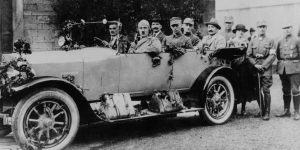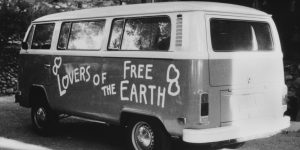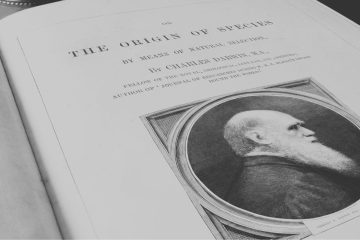What Happened On May 28th?
On May 28, 1937, in Wolfsburg, Germany, Volkswagen was founded with a clear mission: to create an affordable, reliable car for the average German family. This initiative, driven by Ferdinand Porsche’s engineering vision and backed by the National Socialist government, laid the foundation for a company that would produce some of the most iconic vehicles ever made.
However, the development of the Volkswagen Beetle was deeply intertwined with the political landscape of the time. As Hitler and the Nazi Party orchestrated the Anschluss, the annexation of Austria in March 1938, the promotion of the Volkswagen project became a symbol of Nazi industrial and technological prowess.
The car was showcased as part of the regime’s broader propaganda efforts to demonstrate the benefits of Nazi rule. The technological progress “promised” a prosperous future for the German people under the Third Reich.
The Vision Behind Volkswagen
Ferdinand Porsche, an engineer with a dream to design a car for the masses, spearheaded the creation of Volkswagen. The National Socialist government supported this vision to increase car ownership among its citizens. However, affordability alone was not the goal; the car needed to be robust, reliable, and easy to maintain.

In 1933, Adolf Hitler presented Ferdinand Porsche with a contract to design a “people’s car” (Volkswagen), following Porsche’s previous designs such as the 1931 Type 12 car designed for Zündapp. Hitler’s vision was to produce a car that could carry a family of five at a sustained speed of 100 km/h, while being affordable for the average worker. This contract set the wheels in motion for what would eventually become the VW Beetle, a car that perfectly embodied the concept of a practical, affordable vehicle for the masses.
The VW Beetle – An Icon
The first model to come out of Volkswagen’s production line was the VW Beetle, initially named the KdF-Wagen. Introduced in 1938, the Beetle quickly gained popularity for its distinctive design and practical engineering. Its rounded shape and rear-engine layout made it instantly recognizable, and it remained largely unchanged for several decades, becoming one of the best-selling cars of all time.
While it was initially intended for the general populace, the outbreak of World War II shifted the VW Beetle’s production focus. The factory was repurposed to manufacture military vehicles, such as the Kübelwagen and the amphibious Schwimmwagen, both adapted versions of the Beetle. After the war, under British control, Beetle production resumed, and the car’s popularity soared globally.

Beyond its engineering, the Beetle became a cultural icon, as its popularity grew. Known affectionately as “Herbie,” the Beetle starred in a series of popular Disney films starting with “The Love Bug” in 1968. Additionally, it became a symbol of the 1960s counterculture movement, representing freedom and rebellion.
The VW Golf – A New Standard
In 1974, Volkswagen introduced the VW Golf, a model that would revolutionize the compact car segment and become the brand’s best-seller. Known as the Rabbit in the United States and Canada, the Golf was designed to replace the aging Beetle. Its front-engine, front-wheel-drive layout resembled a innovative technological advancement from the Beetle’s design. This offered consumers improved space and performance.
The Golf also set the standard for the “hot hatch” segment with the introduction of the Golf GTI in 1976. Combining practicality with sporty performance, the GTI became an instant favorite. By the early 1970s, Volkswagen faced financial difficulties due to declining Beetle sales. The Golf’s innovative design and broad appeal helped to reverse the company’s downward trajectory.
The Golf’s influence extended into popular culture as well. Its versatility and performance made it a favorite among car enthusiasts and everyday drivers alike. The Golf GTI, in particular, became synonymous with sporty yet practical driving, influencing a whole new generation of car design.
Volkswagen Across The Globe
The VW Bus, another iconic model, became synonymous with the hippie movement. Its spacious interior and unique design made it a favorite among travelers and adventure seekers. The Bus eventually became a symbol of the Woodstock festival, representing peace, love, and music.

Volkswagen’s relationship with Porsche has come full circle, as the two companies, along with Audi, are now part of the Volkswagen Group, one of the largest automotive conglomerates globally. Through different eras, Volkswagen has demonstrated its ability to innovate and adapt.
Did You Know?
One lesser-known fact is that the iconic VW logo was the result of a design competition. Franz Xaver Reimspiess, an employee at Porsche, submitted the winning design, which has since become one of the most recognizable logos in the world.





